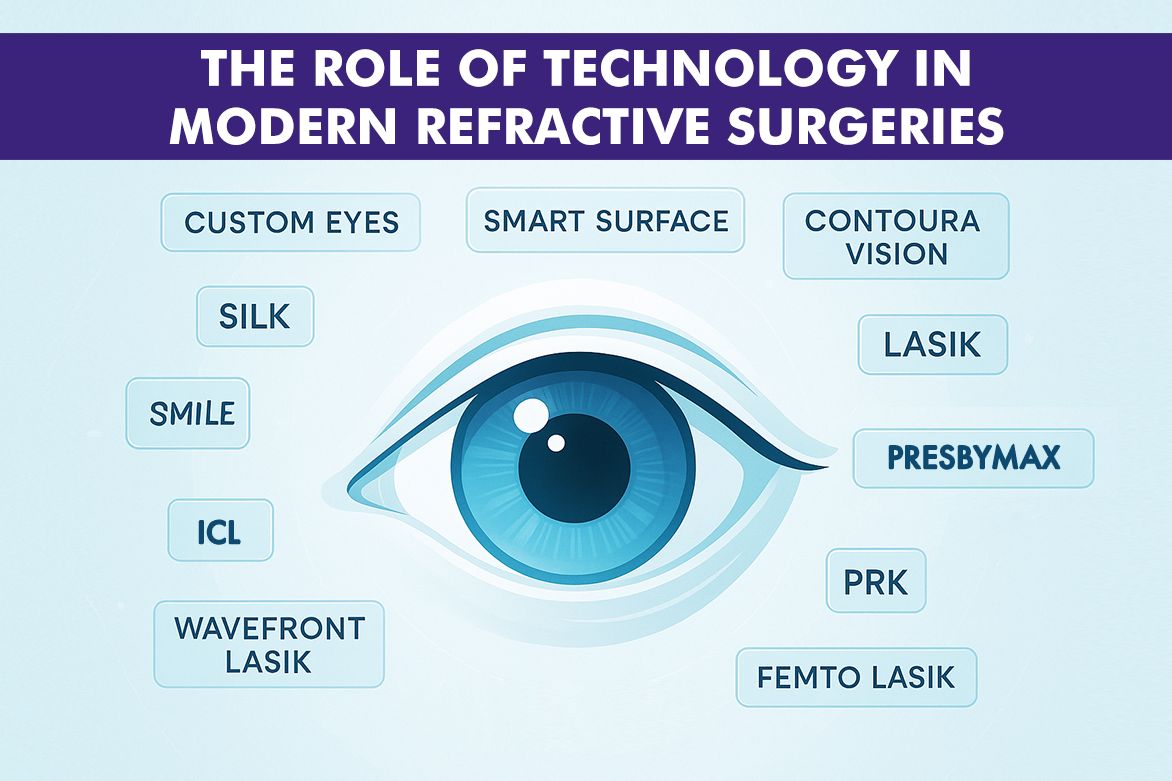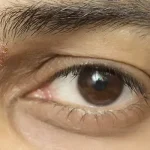Table of Contents
- How Far We’ve Come: A Brief History of Refractive Surgery
- Key Technological Advancements Shaping Today’s Procedures
- The Latest Eye Correction Technologies in 2025
- New Eye Procedures That Are Changing the Game
- Technology and Patient Safety
- The Future of Vision Correction: What’s Next?
- Conclusion
- Frequently Asked Questions (FAQs)
Gone are the days when thick-rimmed glasses were your only escape from blurry vision, and clunky surgical methods left patients hoping for the best.
Today’s world of vision correction is more advanced and accurate – where lasers sculpt corneas with nanometer precision, AI predicts surgical outcomes before the first incision, and patients walk out seeing crystal clear within hours.
The latest eye correction technology 2025 isn’t just making surgeries safer and faster; it’s changing and amplifying what we thought was possible for human sight.
How Far We’ve Come: A Brief History of Refractive Surgery
Radial Keratotomy (RK) in the 1970s was the first step in correcting vision. Surgeons made small cuts in the cornea to change its shape. This method was new and exciting at the time, but it had some problems and gave results that were hard to predict.
PRK, or Photorefractive Keratectomy, was the first time that lasers were used in eye surgery in the 1980s. In the 1990s, LASIK surgery changed everything by making a thin flap in the cornea and then reshaping the tissue underneath it. Compared to older methods, this eye surgery technique helped people heal faster and hurt less.
Each improvement was made in response to the rising need for safer procedures that allowed for faster recovery. Patients didn’t want to spend weeks recovering from eye surgery anymore; they wanted to be able to do their normal activities again in a few days.
Key Technological Advancements Shaping Today’s Procedures
Modern vision-tech depends on a few important new ideas that have changed how surgeons fix refractive problems. Wavefront-guided technology creates a detailed map of how light travels through your eye, identifying tiny imperfections that traditional methods might miss. This personalized approach helps surgeons correct not just basic nearsightedness or farsightedness, but also subtle irregularities that can affect night vision.
Corneal topography enables detailed surface mapping of the eye, comparable to how GPS satellites map the Earth’s geography. Surgeons can use this three-dimensional image to plan the best way to treat each eye.
Eye-tracking systems represent another major leap forward in surgical accuracy. These vision-tech systems can track the slightest movements of the eye in seven dimensions, including horizontal, vertical, and diagonal movements, ensuring the laser stays precisely on target even if you move slightly during the procedure.
The Latest Eye Correction Technologies in 2025
The newest procedures available today offer options for almost everyone seeking freedom from glasses and contacts.
The Elita Femtosecond Laser system powers SILK eye surgery. It runs at 10 MHz and has very short pulse durations of about 150 nJ and low energy levels of less than 45 nJ. This latest vision correction technology creates smooth incisions with minimal tissue disruption, allowing for easier healing and better visual outcomes.
Smart Surface represents a completely different approach – it’s a no-touch, all-laser surface correction method. The SmartSurfACE eye lasering procedure is touch-free and uses both the proven TransPRK surface ablation method and the new SmartPulse technology. During the procedure, no tools ever come into contact with your eye, which is different from other methods.
SMILE surgery offers vision correction without creating a flap in the cornea and uses a single laser which means the laser part of the surgery takes less than 30 seconds. The procedure removes a small piece of tissue through a tiny incision, preserving more of the cornea’s natural strength.
Custom eye surgery like Contoura Vision takes corneal mapping to the next level by developing a comprehensive topographic map of your eye’s surface and tailoring the therapy accordingly. This technology can correct vision irregularities that other methods might miss.
AI-assisted diagnostics and planning technologies are becoming standard in leading eye facilities. AI-powered platforms precisely generate tailored surgical prescriptions for obtaining exceptional spectacle-free vision, allowing surgeons make more educated judgments about treatment options.
New Eye Procedures That Are Changing the Game
Recent innovations have expanded treatment options for people who weren’t good candidates for traditional LASIK.
Refractive lens exchange (RLE) helps older patients by replacing the eye’s natural lens with an artificial one, similar to cataract surgery but performed before cataracts develop. This new eye procedure can fix both distance and reading vision simultaneously.
EVO ICL (Implantable Contact Lens) is a temporary fix for those with very bad nearsightedness or thin corneas. The EVO ICL is an advanced implantable contact lens designed for individuals with moderate to severe nearsightedness that does not involve reshaping the cornea. Instead, a lens that is safe for the body is put within the eye while keeping the original lens shape.
Presbyond helps persons over 40 who have trouble seeing both far away and up close by blending their vision. This new eye procedure enhances the depth of focus by using laser technology to create a customized vision profile, blending near and distance vision seamlessly.
Technology and Patient Safety
Advanced technology has made current eye surgery significantly safer than past procedures. Shorter treatment times lower the likelihood of consequences and patient discomfort.
In the ZEISS SMILE technique, the lenticule is generated in less than 30 seconds per eye, while in the new ZEISS SMILE PRO technology, lenticule formation time is decreased even further to less than 10 seconds each eye.
Patients are less likely to have their eyesight over-corrected or under-corrected because of the ability to customize. Each therapy is made to fit the person’s eye structure and vision needs, which makes the results more predictable.
Enhanced pre-operative screening now includes AI-powered analysis of diagnostic testing. The role of artificial intelligence in eye care has become increasingly important as AI algorithms can look at data from a variety of sources, such as a patient’s demographics, medical history, genetic information, and imaging data, to create treatment recommendations that are unique to each patient. This detailed approach helps identify potential issues before they develop.
The combination of accurate measurements, real-time eye tracking, and individualized treatment plans has reduced the likelihood of significant problems while improving visual outcomes for most patients.
The Future of Vision Correction: What’s Next?
The combination of AI and robotics is already starting to change how eye surgery is done. The Interventional Artificial Eye Surgery System (IRISS) has a tooltip position precision of 0.027 ± 0.002 mm, which is well enough for cataract removal and more delicate retinal surgeries. These systems are currently being worked on, but they could one day be able to do whole processes with human supervision.
Astronomy’s adaptive optics technology could help surgeons see and fix even smaller vision problems. Gene-based medicines might one day stop visual disorders from happening in the first place, but these treatments won’t be widely used for a long time.
As technology gets better, the trend toward more accurate, individualized results will continue. In the future, operations may not only fix current vision impairments, but they may even make vision better than what is naturally attainable.
Conclusion
Technology is changing the way we can fix our vision in a big way.
Procedures now are safer, faster, and more accurate than they were just ten years ago. If you suffer nearsightedness, farsightedness, astigmatism, or trouble reading as you get older, there is probably a technological solution that can assist.
The goal is still the same with all of these improvements: safer operations, faster recovery, and more accurate outcomes. Patients can now choose from a number of options based on their way of life, eye health, and what they want.
If you pick an eye clinic that stays up to date with new technologies, you can be confident that you’ll get the most up-to-date treatments. The future of correcting vision appears better than ever as these technologies keep getting better.





